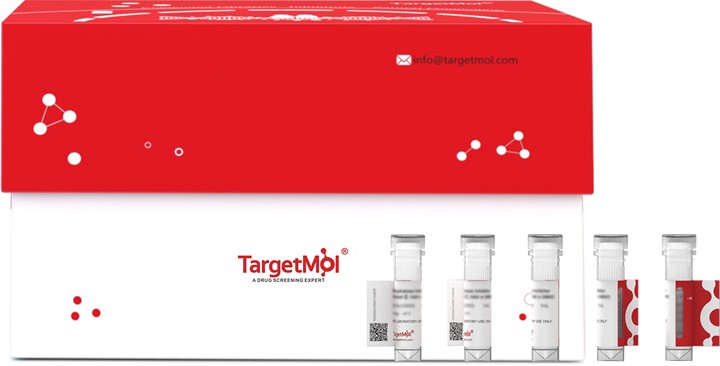Shopping Cart
Remove All Your shopping cart is currently empty
Your shopping cart is currently empty
Heat shock protein beta-1 (HSPB1, also known as HSP27) is a small heat shock protein involved in many cellular processes and reportedly protects cells against oxidative stress. This protein is expressed only in insulin-dependent tissues (heart, skeletal muscle, and fat tissue), and expression of HspB7 is regulated by many different factors. HspB7 has an unusual N-terminal sequence, a conservative α-crystallin domain, and very short C-terminal domain lacking conservative IPV tripeptide involved in a small heat shock proteins oligomer formation.

| Pack Size | Price | USA Warehouse | Global Warehouse | Quantity |
|---|---|---|---|---|
| 5 μg | $56 | 7-10 days | 7-10 days | |
| 10 μg | $88 | 7-10 days | 7-10 days | |
| 20 μg | $143 | 7-10 days | 7-10 days | |
| 50 μg | $278 | 7-10 days | 7-10 days | |
| 100 μg | $465 | 7-10 days | 7-10 days | |
| 200 μg | $839 | 7-10 days | 7-10 days | |
| 500 μg | $1,850 | 7-10 days | 7-10 days |
| Biological Activity | Activity has not been tested. It is theoretically active, but we cannot guarantee it. If you require protein activity, we recommend choosing the eukaryotic expression version first. |
| Description | Heat shock protein beta-1 (HSPB1, also known as HSP27) is a small heat shock protein involved in many cellular processes and reportedly protects cells against oxidative stress. This protein is expressed only in insulin-dependent tissues (heart, skeletal muscle, and fat tissue), and expression of HspB7 is regulated by many different factors. HspB7 has an unusual N-terminal sequence, a conservative α-crystallin domain, and very short C-terminal domain lacking conservative IPV tripeptide involved in a small heat shock proteins oligomer formation. |
| Species | Human |
| Expression System | E. coli |
| Tag | C-His |
| Accession Number | P04792 |
| Synonyms | SRP27,HSPB1,HSP28,Hsp27,HSP 27,HMN2B,CMT2F |
| Construction | Met1-Lys205 |
| Protein Purity | > 95% as determined by Tris-Bis PAGE; > 95% as determined by HPLC |
| Molecular Weight | 23.74 kDa (predicted). The protein migrates to 25-30 kDa based on Tris-Bis PAGE result. |
| Endotoxin | < 1 EU/μg by the LAL method. |
| Formulation | Lyophilized from a solution filtered through a 0.22 μm filter, containing PBS, 2 mM DTT (pH 7.4). Typically, 8% trehalose is incorporated as a protective agent before lyophilization. |
| Reconstitution | Reconstitute the lyophilized protein in distilled water. The product concentration should not be less than 100 μg/ml. Before opening, centrifuge the tube to collect powder at the bottom. After adding the reconstitution buffer, avoid vortexing or pipetting for mixing. |
| Stability & Storage | It is recommended to store recombinant proteins at -20°C to -80°C for future use. Lyophilized powders can be stably stored for over 12 months, while liquid products can be stored for 6-12 months at -80°C. For reconstituted protein solutions, the solution can be stored at -20°C to -80°C for at least 3 months. Please avoid multiple freeze-thaw cycles and store products in aliquots. |
| Shipping | In general, Lyophilized powders are shipping with blue ice. |
| Research Background | Heat shock protein beta-1 (HSPB1, also known as HSP27) is a small heat shock protein involved in many cellular processes and reportedly protects cells against oxidative stress. This protein is expressed only in insulin-dependent tissues (heart, skeletal muscle, and fat tissue), and expression of HspB7 is regulated by many different factors. HspB7 has an unusual N-terminal sequence, a conservative α-crystallin domain, and very short C-terminal domain lacking conservative IPV tripeptide involved in a small heat shock proteins oligomer formation. |
| Size | Quantity | Unit Price | Amount | Operation |
|---|

Copyright © 2015-2025 TargetMol Chemicals Inc. All Rights Reserved.